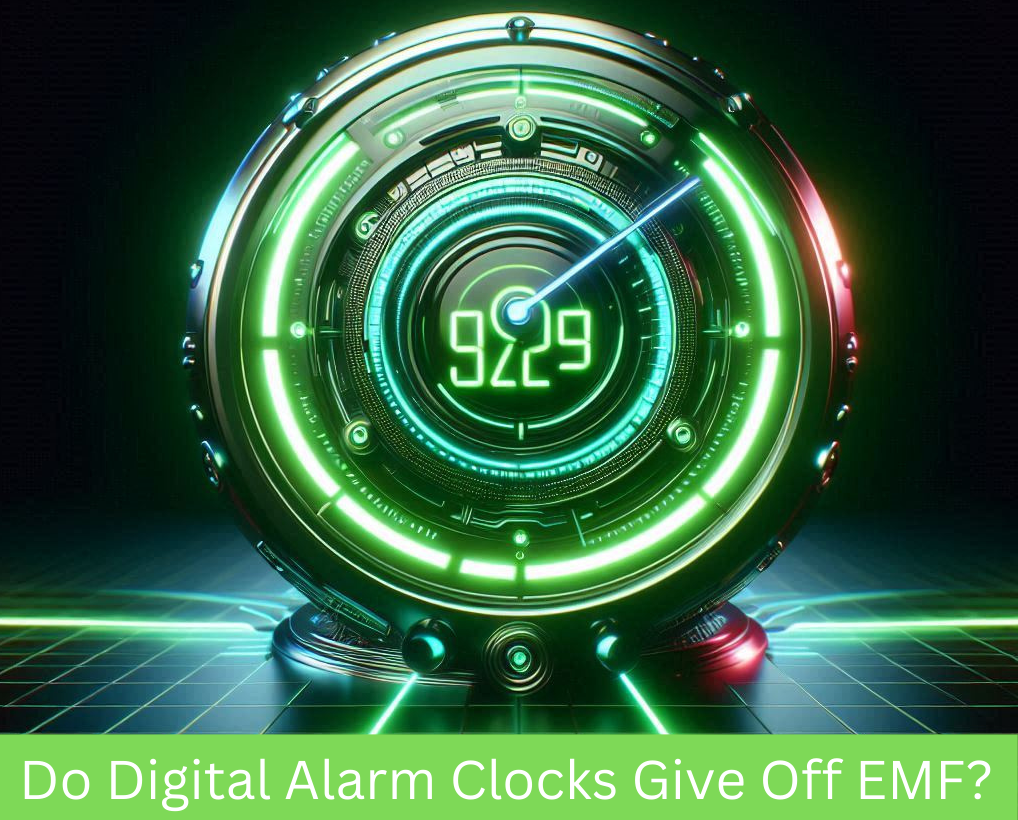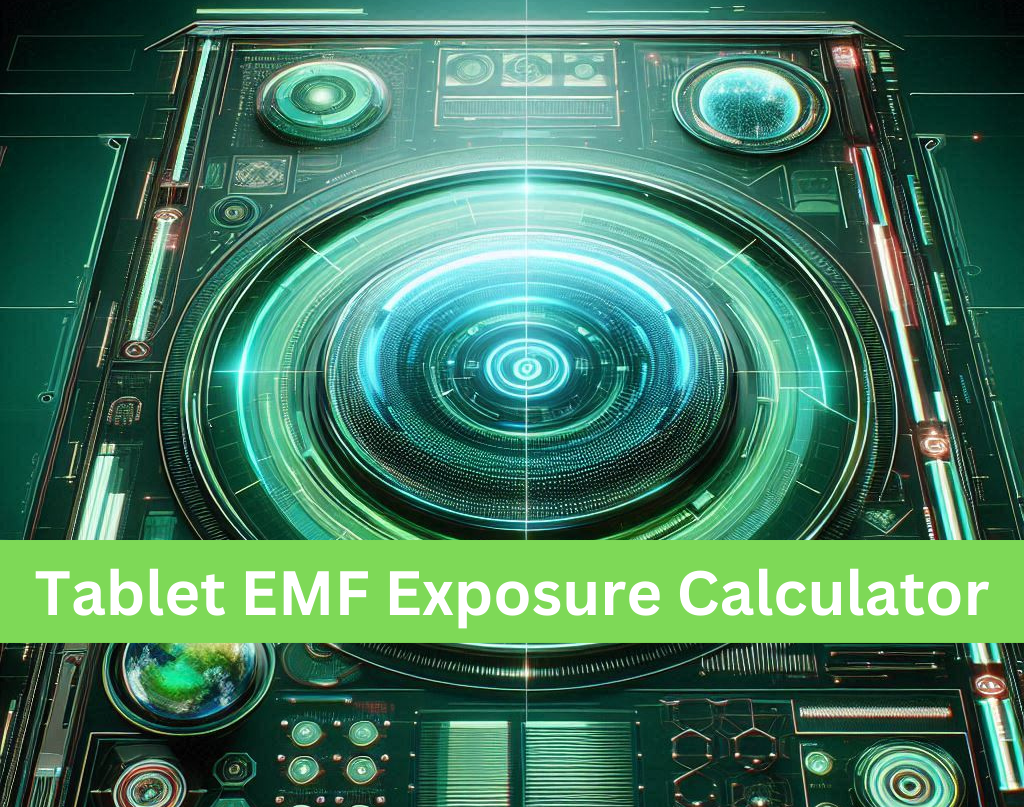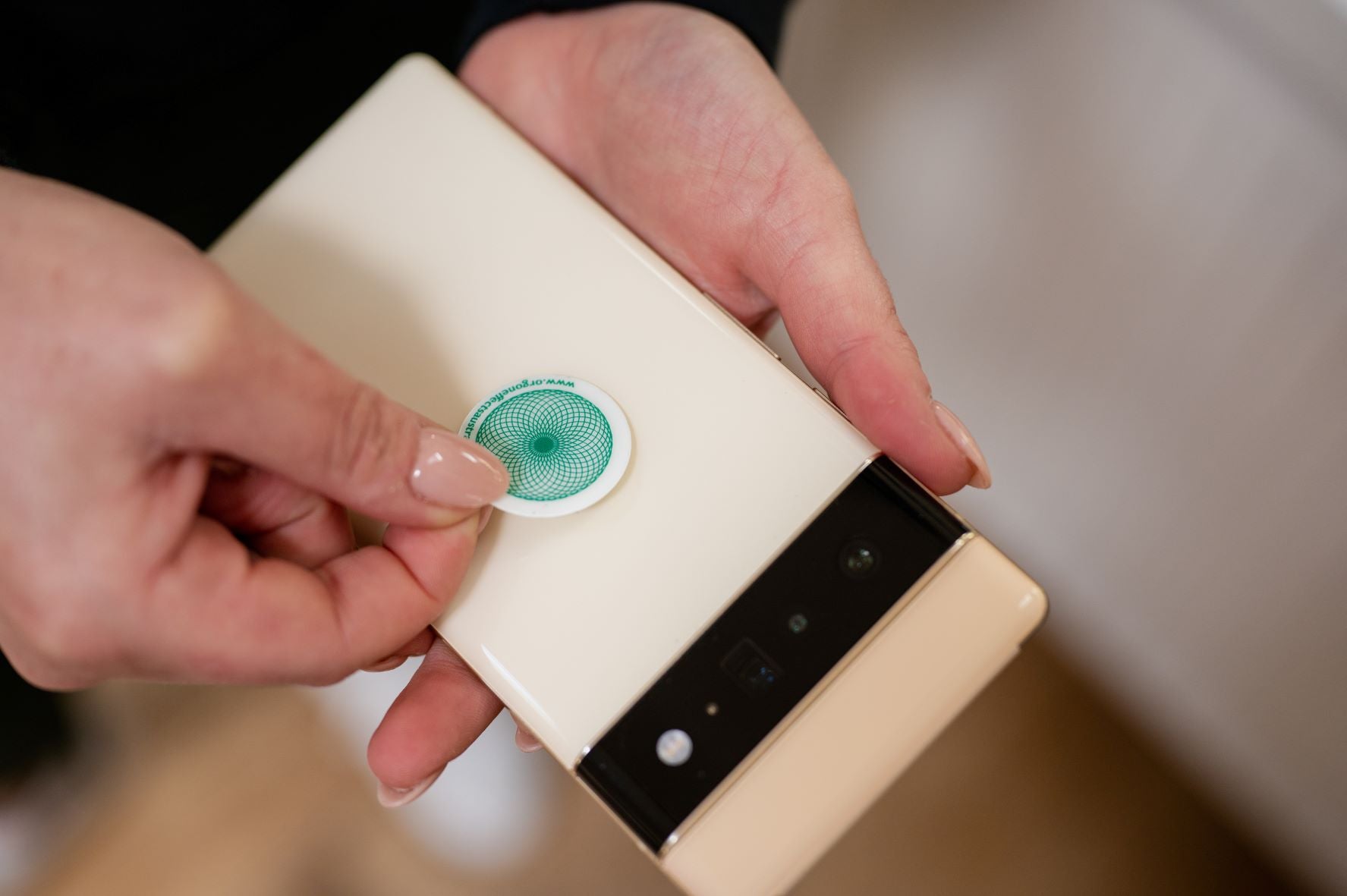Wireless technology has made big leaps in recent years, and while it can feel like we are living in the future, it’s important to remember that it’s not as perfect and pristine as it might seem at first. As we learn more about the possible risks of EMF and RF radiation, we are starting to see that the next-generation technology we have been so excited about might come with hidden dangers.
Can wireless chargers increase your exposure to EMF radiation? To help you get a better sense of your potential exposure, we have created a handy Wireless Charging Pad EMF Calculator. It’s simple to use—just enter a few details about your charger and how you use it, and you’ll receive an estimate of the magnetic field strength you might be facing (in µT or mG).
What Is Wireless Charging?
Wireless charging is a method by which electronic devices such as smartphones, headphones, smartwatches, and nearly any battery-powered gadget can be charged without a cable. It’s a cool new gadget, and honestly, it has some practical benefits:
- You won’t have to stress about keeping track of different chargers
- You can say goodbye to the hassle of tangled wires
- Looks great and fits nicely into your space
- Lower chance of electrical issues that could lead to fires
- Easy to incorporate into other devices or objects
That said, as we’ll discuss later, objects and devices like desks and lamps with built-in wireless chargers can be more problematic than they seem at first.
The reason wireless charging has become so popular really ties to what consumers are looking for. Generally, convenience is a big driver behind today’s tech trends, and for most people, not having to plug any devices in makes life a lot easier.
How Does Wireless Charging Work?
Wireless chargers work by using electromagnetic inductive charging technology. The charging process can happen in three (3) ways:
- The wireless charging pad employs tightly connected electromagnetic inductive charging, also called non-radiative charging.
- A charging bowl or surface charger uses a loosely connected electromagnetic system to transmit power over a short distance, just a few centimeters.
- Using uncoupled RF wireless charging to transmit over distances of a few meters.
Depending on the process used, a copper coil in the charging station (transmitter) creates an oscillating magnetic field that generates current in the receiver antenna. When the receiver coil gets closer to the charging surface, it interacts with the magnetic field, generating an electric current. The coil in the charger transfers power from the base to your mobile phone.
Magnetic resonance allows power to be transmitted over longer distances and improves the efficiency of current flow between the receiver and the transmitter.
As a result, the wireless charger relies on inductive coupling between your phone and the charger. The charging station sends a test signal to your phone to figure out how much power is needed for a full charge.
Once it determines the power requirements, the charging process starts and continues until your phone is fully charged.
Does Wireless Charging Emit EMF?
Absolutely! There’s no doubt about it. All wireless charging pads give off EMF radiation. Actually, all wireless devices give off EMF radiation; it’s how they connect and exchange information!
Here, the key difference is that instead of sending information, it’s energy that’s being transmitted. But really, the basic idea is still the same.
If there’s one thing to take away from this article, it’s this: wireless always means EMF. Whether it is a phone call on your mobile or the Wi-Fi in your home, whenever two devices are connected wirelessly, they’re continuously transmitting an electromagnetic signal through the air.
Wireless charging relies on electromagnetic resonance and radio frequencies in the induction process. The wireless charger gives off EMF radiation in the form of electric fields, magnetic fields, and radio frequencies.
Wireless chargers give off high levels of magnetic field radiation but relatively low levels of radiofrequency radiation. High levels of radiofrequency radiation are very harmful to your health, but the amount that these devices emit is generally low. Additionally, the electromagnetic frequency given off by the chargers only activates when the phone is charging.
Today’s wireless charging pads are fitted with Qi technology, which allows them to transfer power inductively to compatible devices. When the magnetic field around the charging pad is measured, you’ll get zero readings.
However, once the charging pad becomes active because you placed a phone on the pad, the magnetic field reading jumps to 3 mG, which is higher than the recommended 1 mG. Any electromagnetic radiation above the recommended 1 mG level is thought to be harmful to your body.
If you step a few inches away from an active wireless charger, the readings can fall below the recommended 1 mG level. Therefore, the farther you are from the charger, the less radiation you’re exposed to.
How to Use Wireless Charging Pads Safely?
Even though regulators haven’t addressed this issue yet, there are still simple steps we can take to reduce our exposure to harmful radiation. Using an EMF meter, adjusting how you interact with your devices, or just doing a bit of research before introducing a new EMF source into your home – small precautions like these can make a real difference, helping to protect both your peace of mind and your health.
Here are 5 practical ways to responsibly use wireless chargers:
1. Always charge your devices overnight
Generally, charging your devices overnight is a good habit to get into if you have not started already. Honestly, if you’re hoping for a good night’s sleep, it’s a good idea to put your phone down and avoid scrolling in bed. The light from your phone screen can throw off your sleep cycle, making it tougher to get a good night’s sleep.
Charging your devices overnight is a great way to keep your EMF exposure in check, allowing you to control when and how much you’re exposed to it. If you’re using a wireless charger during the day, chances are you’ll have it near your workstation. After all, you will want to catch those important messages as soon as they arrive. This means you’re exposing yourself, or possibly even your coworkers, to higher levels of magnetic radiation than you’d like.
By charging your device overnight, you are not only developing a healthier routine, but you are also limiting the amount of time you or those around you are exposed to your charger’s magnetic field.
2. Keep the charger out of the bedroom
If you’re using a wireless charger overnight, you shouldn’t leave it right next to your bed. Granted, it’s mostly common sense, but having a source of magnetic radiation on your nightstand while you sleep is practically a surefire way to get maximum exposure to radiation.
To give yourself a break, leave your phone charging in another room and pick it up in the morning. After all, it isn’t like you need to check your email while you’re sound asleep.
3. Unplug your charging station during the day
Just to emphasize: it’s always wise to take a few extra precautions! Unplugging the charging station only takes a few seconds and is a perfectly effective way to ensure it can’t emit a magnetic field when not in use. Simply turning off the cord at the outlet or unplugging it from the wall is an easy way to ensure there’s no magnetic radiation being emitted while you go about your day at home. That’s why having devices with built-in wireless chargers might not be the smartest option.
4. Change your phone’s setting to reduce exposure and extend battery life
Did you know that Bluetooth is also a form of EMF? What’s even more worrying is that keeping it on all the time not only exposes you to extra radiation but also drains your phone’s battery for no good reason.
While Bluetooth certainly has its benefits, it constantly drains your phone’s battery, which is no fun, especially if you have an iPhone or older model.
Using a wireless charger means even more radiation is being emitted, for no reason at all. Adjusting your phone’s settings to extend battery life helps minimize charging time and keeps you safe during the day.
5. When in doubt, stick with cables!
While wireless charging is new and flashy, it’s also often just not as practical. Regular charging cables pose virtually no threat to you and your family’s safety and are easy to use. As long as you take care to replace them when they become damaged, there’s no real reason to consider them a safety issue.
6. Reduce EMF exposure:
Invest in EMF radiation protection products, such as the GeoClense EMF and Earth Radiation Harmonizer, to lower your exposure by as much as 85%. The Geoclense Orgone Negative Ion Generator consistently generates healthy beneficial Negative ions that work by harmoniously neutralizing your entire property and home all the way to its boundaries, counteracting each one of these destructive energies such as radiation and electromagnetic frequencies. The Geoclense is a healthy, negative charge resonance field generator designed to balance the noxious, unhealthy positive charge resonance created by 5G and all forms of EMR, RF, Wi-Fi, Earth Radiation, and Bioplasmic Radiation.
Is Wireless Charging Worth it?
As with many things in life, this remains a gray area. We can’t definitely say whether the magnetic radiation from your wireless charger is harmful because there simply hasn’t been enough research done on the topic yet.
Then again, there’s a reason the FCC carefully monitors the specific absorption rate (SAR) of EMFs given off by your phone. If they have concerns about that, it makes you wonder why they aren’t equally worried about wireless charging.
When you look closer, you should also ask yourself what the real benefits of wireless charging are compared to the possible risks.




